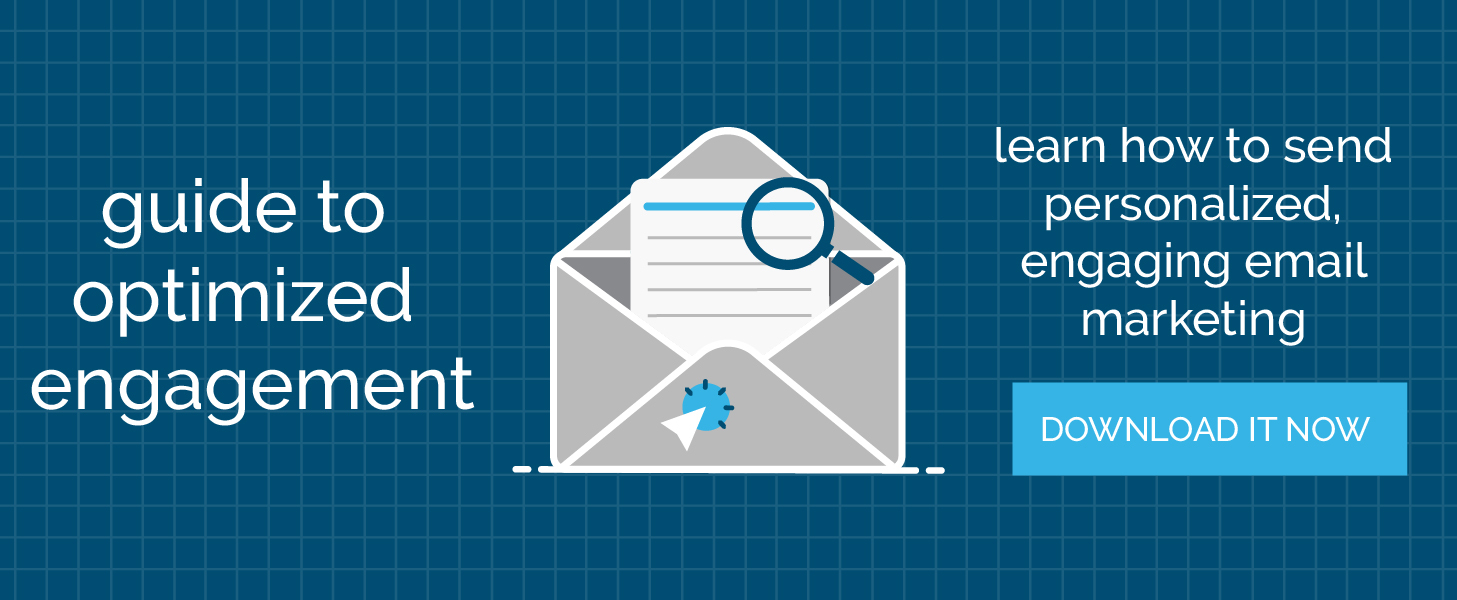If it didn’t work the first time… try, try again.
That’s the idea behind this email marketing re-mailing tactic.
Re-mailing involves sending the same message again at a later time. But you only send it to those subscribers who didn’t open the email the first time around. These types of emails are some of the easiest to send because they don’t require additional creative efforts and you can end up engaging more subscribers.
Because email marketing re-mailing is a simple and effective way of driving additional engagement and revenue from your email marketing, we’ve put together a few go-to tips for this hack.
subject lines
It’s possible recipients saw the subject line of your original email campaign in their inboxes, but didn’t open. So it’s important when you’re re-mailing, you use a different subject line than the original.
In fact, this is the whole crux of making email marketing re-mailing successful.
The first subject line either didn’t resonate with subscribers, caught them at a time when they were too busy to click, or just got lost in the inbox and missed their eyeballs altogether.
Changing the subject line is important for many reasons:
1 – It eliminates any confusion on the part of subscribers. If they were to notice the same exact subject line in their inboxes multiple times within a given timeframe, they’d likely be suspicious or think you’d made a mistake.
2 – 47% of email recipients open emails based on subject lines alone. Test your subject lines to determine what works best for your email marketing re-mailing campaigns.
3 – Subject lines with 61-70 characters have a 17% average read rate — the highest of any length. However, for subscribers reading your campaigns on mobile devices, shorter is better.
4 – Consider personalizing your email marketing re-mailing subject line. Subscribers are more likely to open personalized subject lines by 22%.
Here’s an example of an email marketing re-mailing campaign from Shutterfly. Notice the subject lines are different… but when opened, the content is exactly the same.
sending day and time
In our experience, the majority of email opens occur within 24 hours of delivery.
From a best practices standpoint, we typically tell clients to send their email marketing re-mailing campaigns 2-3 days after the original send. In truth, though, the timing depends on the specifics of your company and list.
Here are some tips for deciding on sending day and time:
1 – Make sure you give people enough time to open your original email and respond — typically at least 24 hours.
2 – Look at your previous email campaigns and determine the amount of time it takes for most subscribers to open them. DON’T send your email marketing re-mailing campaign within this timeframe.
3 – Send your re-mailing campaign at a different time of day and day of the week than your original email. Sometimes simply changing the day of the week or time of day can make all the difference in getting someone’s attention in the inbox.
email marketing re-mailing content
Not every single message you send may qualify for an email marketing re-mailing. You’ll just want to focus these campaigns on your most important messages:
- Big sales/promotions/offers
- Important announcements
- Re-engagement campaigns
- Content that is geared toward generating engagement/awareness/etc.
An exception to the general “wait at least 24 hours” rule is if you’re sending on a major shopping day such as Black Friday or Cyber Monday. A similar exception would be if you’re having a quick flash sale that will be complete in a number of hours, not days.
In these instances, it’s acceptable to send email marketing re-mailing campaigns on the same day for a number of reasons:
1 – On big shopping days like Black Friday and Cyber Monday, you’re competing for attention in the inbox at a much more aggressive rate than a typical day. Many companies send emails and yours could quickly get buried. So re-mailing is a way to keep your message at the top of the inbox throughout the busy day.
2 – On major shopping days, some retailers execute re-mailing multiple times throughout the day. If you go this route, be sure to space your messages out enough so they don’t appear smack on top of each other in the inbox.
3 – For flash sales that end in a matter of hours, re-mailing is a way to instill a sense of urgency that subscribers need to act now or risk missing out.
conclusion: email marketing re-mailing campaigns can be a lifesaver
Think your email campaign is a flop?
It might just need another chance! And you can give it that opportunity to perform well by executing an email marketing re-mailing campaign.
These campaigns are an easy way to generate additional revenue that otherwise would have been lost. And since many companies lack time and resources to create multiple marketing campaigns in a short time frame, re-mailings are an answer to prayer.
Have questions about any of these tips? Our experience strategy team has helped hundreds of clients implement them, and they’d be happy to help you, too! Just reach out.










